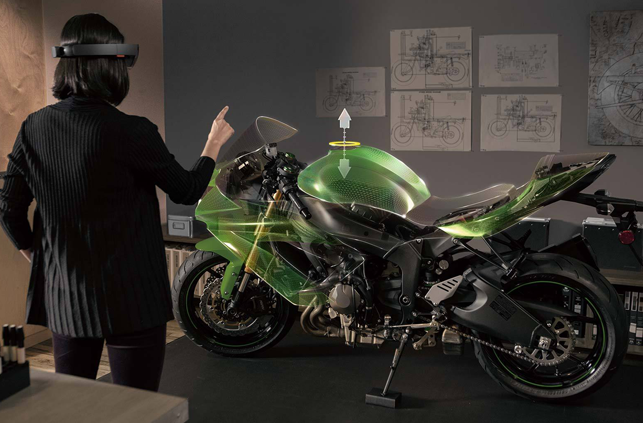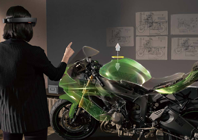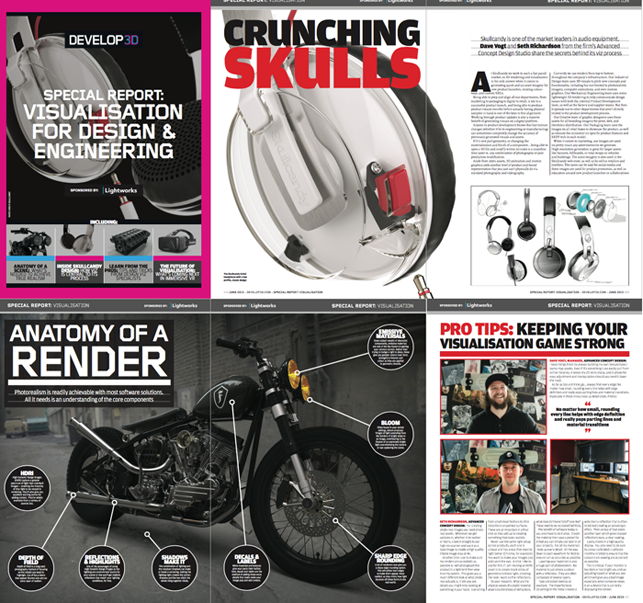Developments that have already started will not only make our workflows more efficient but the visualisation experience much more engaging, writes Al Dean

A glimpse of the future? Microsoft’s Hololens being used in product development
It has been an interesting few years for visualisation in the design and engineering market.
As someone that has been working in the field for 20 years (I remember the days of 3D Studio running on DOS) I find it truly amazing to see how far we’ve come.
Back in the day, the whole process was fraught with inefficiencies, highly manual processes to define even the most simple and basic of materials. And lighting scenes. Don’t get me started on that particular subject. I thank the Gods for HDR image-based lighting and the time it has saved us.
Today, physically-based renderers, that progressively stream render data to our screens, rule supreme in product development. The are easy to use, making them accessible to non-experts, and are continually taking advantage of new technological advancements.
Material definition in these systems, whether fine-tuning presets, creating them from scratch or using measured materials, is advancing at an incredible rate.
Computational power in even the most average of computing devices is now way beyond what we had a decade ago. What used to take hours, even days, can now be done in a matter of minutes.
Throw enough processing power at a problem, as we saw with Nvidia’s Honda demo at GTC 2014 [below], and real time ray tracing has already become a reality.
https://youtube.com/watch?v=pWG1papHePI%3Fcontrols%3D0
Of course, investing in a cool $1m of rendering hardware is completely out of the question for most design and engineering firms, which is why the cloud is set to play an increasingly important role. It will
allow anyone to have access to real time ray tracing on demand, which makes for a truly compelling solution when deadlines are looming or you want a truly interactive design review session.
Moving between local and cloud processing, as and when workflows dictate, will be seamless.
While real time ray tracing on the desktop is still some way away an increasing number of rendering software developers are also taking advantage of the latest advances in OpenGL and high performance graphics cards to deliver fully interactive visualisation in the viewport. It may lack the physical perfection of a ray traced image, but the quality is superb, and most importantly, it is real time in the true sense of the word.
Viewing these scenes on a 4K or 5K screen is impressive, and while resolutions will continue to rise in the coming years the most exciting developments are happening in virtual reality and augmented reality.
The new consumer headsets coming on stream are high quality, head tracking devices that give you a much more immersive experience that a simple two dimensional display. The ability to combine real world data and overlay a photorealistic CGI of a virtual component, can benefit us in ways we can’t even imagine.
And it will only get better. And cheaper. And (most importantly) easier to use.
With many of these technologies aimed at the consumer, immersive visualisation will be within reach of any design or engineering firm.
There will be no huge need for costly consulting. Plug it in and it’ll work. And that is truly exciting.
DEVELOP3D Visualisation For Design And Engineering Special Guide
Download our free guide to the latest viz software and hardware, plus exclusive pro tips and views on where everything is heading in the future. Not signed up to DEVELOP3D yet? It’s simple and free to do, and you can download our monthly magazine for product designers, engineers, makers and anyone else wanting to join the party – Sign up here.
New developments are set to make the visualisation experience much more engaging
Default







